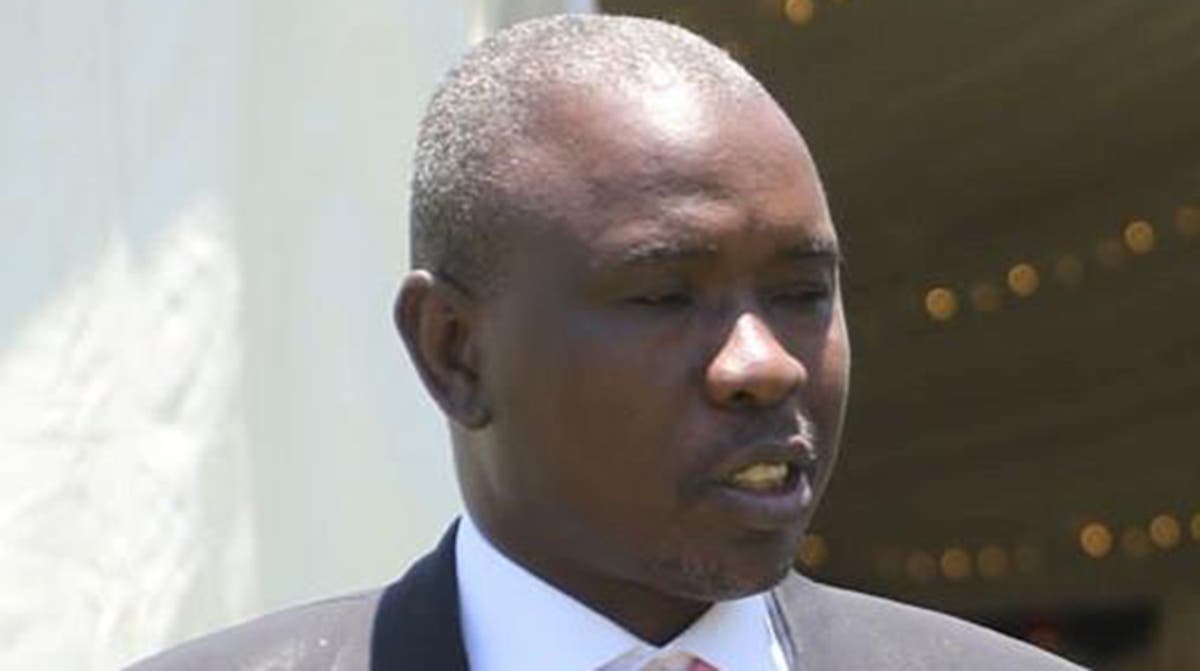
BUSINESS kingpin Kudakwashe Tagwirei has long had a commanding position in Zimbabwe’s US$100m-a-month fuel import market, and owns major stakes in banking, telecoms and the country’s largest platinum mines.

But it is unclear how much he controls in his own right and to what extent is holding stakes on behalf of top political and military figures.
Should Tagwirei gain control of Fidelity Printers and Refiners, he would become the leading force in the country’s main foreign exchange earner, the gold industry.
Fidelity’s gold purchases amounted to US$700m in the first 10 months of last year, and its refinery has an annual capacity of 50 tonnes. Fidelity has agents buying on its behalf from artisanal and small-scale miners around the country.
The RBZ is planning to unbundle Fidelity into two business entities — a gold refining unit and a printing and coin minting business.
Although it will retain the printing business, the central bank announced that it will offer a 60% stake in the gold refinery and marketing arm to large-scale gold producers, major gold buying agents and small-scale producers through their associations.
A three-year average delivery of gold to Fidelity will be used by the RBZ to determine its offer to the various players.
- Chamisa under fire over US$120K donation
- Mavhunga puts DeMbare into Chibuku quarterfinals
- Pension funds bet on Cabora Bassa oilfields
- Councils defy govt fire tender directive
Keep Reading
The central bank has not explained the period over which the three-year average would be worked out, but a mining industry source said this would be calibrated to ensure Tagwirei scoops a sizeable interest in Fidelity.
The source said Tagwirei and associates in his company Sotic International have been pushing for a model similar to South Africa’s Rand Refinery, which is owned by major gold mining companies.
They were the proponents of the unbundling exercise, the source said, and have been using their influence on the State and its institutions to get a grip on the plant.
Spree
Tagwirei has been on a buying spree of mining assets in the country, using Sotic or its wholly owned subsidiary Landela Mining Ventures. This included Sotic’s 2019 purchase of a 74,73% stake in Bindura Nickel Corporation from Asa Resources, and Landela’s acquisition of one of Zimbabwe’s biggest gold mines, Freda Rebecca.
Freda Rebecca was licensed as a gold buyer by Fidelity in June last year. The mining firm has stitched up a lucrative gold-buying funding arrangement with the largest commercial bank in the country, CBZ Holdings, reported to be 30%-owned by a Tagwirei company. Freda Rebecca aims to buy a tonne of gold every month for the next three years under the arrangement — equivalent to over 60% of the 19 tonnes that Zimbabwe officially purchased last year.
Landela also bought Shamva gold mine, with capacity to produce 21 000 ounces (0,6 tonnes) a year, from Mzi Khumalo’s Metallon last year. Khumalo’s operations in Zimbabwe were hobbled by a politically charged dispute with the government, allowing Landela to step in at an advantageous price.
Landela is targeting six more mines, including four that had been mothballed by the Zimbabwe Mining Development Corporation, with a capacity to produce at least
85 000 ounces (2,4 tonnes) a year, according to Sotic CEO David Brown, who is also Landela’s CEO and former chief executive of South African mining company Impala Platinum.
Two of the mines, Metallon-owned Mazowe and Redwing, are “as good as in the bag”, according to two sources familiar with discussions. Metallon was forced to put most of its mines under care and maintenance after failing to get “proper compensation” from Fidelity for its gold production. Between 2016 and 2019, the company lost US$82m, and sued for a US$132m claim for lack of profit during the period.
Considering that Landela also assumed Metallon’s liability in the acquisition of its mines, an industry source speculated that the claim on Fidelity could also be transferred to the new mine owners, who may leverage that for a higher stake in the gold refinery.
‘Unimaginable’
It was Sotic again that was handed the military’s stake in a US$4 billion platinum joint venture with Russian investors. Mining executives said the deal was “unimaginable”, and suspect that Sotic may simply have acted as a cover for the army, whose involvement was scaring investors away.
The military, through Zimbabwe Defence Industries, under US sanctions, and the Zimbabwe Mining Development Corporation, together held 30% of the joint venture, known as Great Dyke Investments, also headed by Brown.
In December, Mnangagwa disclosed that a new, hitherto unknown entity, Kuvimba Mining House, had become the new owner of Sotic and Landela’s gold and platinum assets. It is once again Brown who is in charge of Kuvimba.
The government is a 65% shareholder in the new entity, with the remaining 35% belonging to another mysterious company Quorus, registered in Mauritius, where information on ownership is kept secret.
“Tagwirei is not part of that vehicle. The speculation is unfortunate,” said Brown. Brown and Finance minister Mthuli Ncube have not explained how privately held assets, bought using offshore capital, suddenly belonged to the State.
There is no explanation for the latest move, mining sector executives say, other than that the government is now trying to distance Tagwirei from the investments because of the US sanctions.
Fuel, mines and banks — the Tagwirei method

TAGWIREI has built up his wealth in large part through a long-standing partnership with major commodities trader Trafigura, which has been trying to distance its operations from him as he faces international commercial and political sanctions. Yet Tagwirei retains his sway in Mnangagwa’s government, as it is rocked by the coronavirus pandemic (AC Vol 61 No 5, Oil, guns and politics).
Zimbabwe, currently a pariah on international money markets, has been unable to secure funding from the International Monetary Fund, the World Bank and the African Development Bank due to arrears to the latter two.
Mnangagwa’s plans to repay these debts and re-establish relations with international lenders have floundered, leaving Zimbabwe to rely largely on other lenders, mainly Afreximbank, owned by member states of the AfDB (AC Vol 61 No 25, The State’s parallel economy).
Tagwirei has been an opaque source of funds to Zanu PF politicians and projects, including the Command Agriculture programme, which has consumed some US$2 billion of State resources without credible accounting.
In 2019, Tagwirei was reported, via an entity under his direct control, to have purchased a 30% stake in CBZ Holdings, the country’s biggest lender. Officials at the bank, conscious of the implications of such a stake for its US dollar business, insist that Tagwirei has no managerial or policy role in the bank nor have they linked any of the bank’s shareholders to entities controlled by him.
Despite the country’s macro-economic crisis, CBZ’s financial position has strengthened in recent months. Bloomberg News reports that CBZ was in talks with the RBZ to buy several smaller lenders in a consolidation drive to create fewer, stronger institutions.
Late last year, a company linked to Tagwirei was reported to have acquired a 37,79% stake in banking group ZB Financial Holdings, from compulsory pension fund the National Social Security Authority. The shares are now held through Datvest, a unit of CBZ. Former Finance minister Tendai Biti, who is chair of Parliament’s Public Accounts Committee, described it as “a bank heist”. “Now [the] target is First Mutual Holdings,” he said, referring to reports that Tagwirei plans to acquire another listed financial services group.
The move on ZB Financial Holdings is also strategic in the scheme to acquire the refinery: ZB Bank is possibly the largest gold buying agent for Fidelity in the country. Tagwirei’s steady embrace of banking stakes and his moves on Zimbabwe’s gold industry look closely connected.











